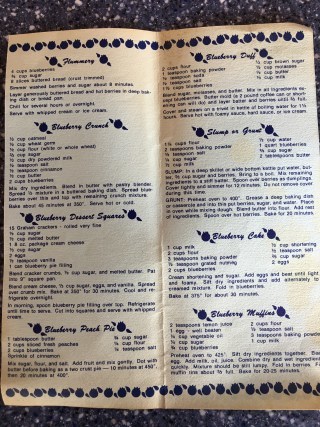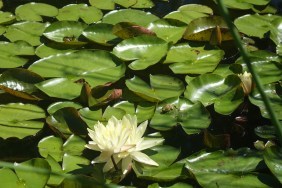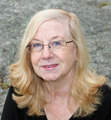Kate Flora: I started thinking about scents and how they connect to memory this  morning after a conversation with the plumber. We were talking about living in Maine and he was recounting his different scent memories of summer on the Harpswell islands. Then he paused and said, “And our kid’s memories are going to be of Purell.”
morning after a conversation with the plumber. We were talking about living in Maine and he was recounting his different scent memories of summer on the Harpswell islands. Then he paused and said, “And our kid’s memories are going to be of Purell.”
I hope not. Summer is a season rich with scents and I hope our children and our grandchildren have a summer filled with scent and the adventures that attach to them and build up a store of scent memories. The question of why scent memory is so powerful and evocative sent me to look for articles on the subject. There were many, explaining in detail how our brains process scent and how the pathway for scent is different from that traveled by sight or sound.
Almost everyone is familiar with the story of Proust and the madeleines. But I think everyone has particular scents that evoke memories.
In this article, Dawn Goldworm, a scent expert who designs signature scents for popular brands, explains that smell and emotion are stored as one memory and says “childhood tends to be the period in which you create the basis of smells you will like or hate for the rest of your life.” https://news.harvard.edu/gazette/story/2020/02/how-scent-emotion-and-memory-are-intertwined-and-exploited/
And as this article in Scientific American notes, “anecdotally, many of us have had experiences where a certain smell—perhaps chlorine, fresh baked cookies, or the salty beach air—floods our brain with memories of a distinct event or location that we associate clearly with certain emotions.” https://www.scientificamerican.com/article/why-do-smells-trigger-memories1/
Of course, writers love doing research, and I moved on to this article, which explains why scents, more than sights or sounds, trigger memories: “A scent is a chemical particle that floats in through the nose and into the brain’s olfactory bulbs, where the sensation is first processed into a form that’s readable by the brain. Brain cells then carry that information to a tiny area of the brain called the amygdala, where emotions are processed, and then to the adjoining hippocampus, where learning and memory formation take place.
Scents are the only sensations that travel such a direct path to the emotional and memory centers of the brain. https://www.livescience.com/why-smells-trigger-memories.html
 Okay. Enough science. Now for my own world of scent. When we bought our little oceanside cottage twenty-one years ago, it was my first time living so close to the sea, although in Union there were definitely days with a touch of sea in the air. We would arrive late on Friday night after work, get out of the car, and be met with a wave of briny air. Sometimes it was foggy air that left its touch on our skin, but it was the scent that always heralded our arrival. It always felt somehow extra nutritious, and I would inhale deeply and feel welcomed to the weekend.
Okay. Enough science. Now for my own world of scent. When we bought our little oceanside cottage twenty-one years ago, it was my first time living so close to the sea, although in Union there were definitely days with a touch of sea in the air. We would arrive late on Friday night after work, get out of the car, and be met with a wave of briny air. Sometimes it was foggy air that left its touch on our skin, but it was the scent that always heralded our arrival. It always felt somehow extra nutritious, and I would inhale deeply and feel welcomed to the weekend.
The scents of the sea, carried by wind and fog, are different from the scents I grew up with on a lakeside farm. There the water had its own special scent, of decaying leaves, and water plants and something of the smell of hot sun on the rocks. Before we could go down to the pond, there were always chores. Often ironing, and the fresh scent of hot iron on cloth. Weeding the garden or harvesting produce, with the scents of the various vegetables growing there. The pungent smell of tomatoes, the ferny smell of carrot tops, the distinctive scent of peppers, or peas, or green beans.
Other days, the chores involved picking berries, and there would be the strange, sweet smell of those blueberries berries that got smushed, or the tempting, yet slightly acidic smell of raspberries, or the sweet, tempting smell of ripe strawberries.
smell of those blueberries berries that got smushed, or the tempting, yet slightly acidic smell of raspberries, or the sweet, tempting smell of ripe strawberries.
The trip down to the pond was through the fields. Sometimes they would smell of fresh mown hay. Other days of the scent of leaves drying in the August heat. Then back at the house, since we always made our own bread, there would be the irresistible smell of hot, fresh bread.
This article from the New York Times suggests an exercise for school children, but it can just as easily be an exercise for anyone: make yourself a smell museum. You already know some of what I’d put in mine. I’d also add gardenias, my favorite flower, and stargazer lilies. What would you put in yours?
https://www.nytimes.com/2020/11/24/learning/what-smells-trigger-powerful-memories-for-you.html?.?mc=aud_dev&ad-keywords=auddevgate&gclid=Cj0KCQjw5uWGBhCTARIsAL70sLJt5HN3cucENmFF8fyKXkylb5hPWwOX2DWlyEA73PmgRV1fdpF-xbMaAtx3EALw_wcB&gclsrc=aw.ds
 newest »
newest »
 newest »
newest »
 I love eucalyptus smell reminds me of childhood because when I was little we use to go to a park that had those trees, The light smell of roses reminds me of my grandmother who use to grow roses in her garden. For myself I generally go towards floral and coconut.
I love eucalyptus smell reminds me of childhood because when I was little we use to go to a park that had those trees, The light smell of roses reminds me of my grandmother who use to grow roses in her garden. For myself I generally go towards floral and coconut.

 morning after a conversation with the plumber. We were talking about living in Maine and he was recounting his different scent memories of summer on the Harpswell islands. Then he paused and said, “And our kid’s memories are going to be of Purell.”
morning after a conversation with the plumber. We were talking about living in Maine and he was recounting his different scent memories of summer on the Harpswell islands. Then he paused and said, “And our kid’s memories are going to be of Purell.” Okay. Enough science. Now for my own world of scent. When we bought our little oceanside cottage twenty-one years ago, it was my first time living so close to the sea, although in Union there were definitely days with a touch of sea in the air. We would arrive late on Friday night after work, get out of the car, and be met with a wave of briny air. Sometimes it was foggy air that left its touch on our skin, but it was the scent that always heralded our arrival. It always felt somehow extra nutritious, and I would inhale deeply and feel welcomed to the weekend.
Okay. Enough science. Now for my own world of scent. When we bought our little oceanside cottage twenty-one years ago, it was my first time living so close to the sea, although in Union there were definitely days with a touch of sea in the air. We would arrive late on Friday night after work, get out of the car, and be met with a wave of briny air. Sometimes it was foggy air that left its touch on our skin, but it was the scent that always heralded our arrival. It always felt somehow extra nutritious, and I would inhale deeply and feel welcomed to the weekend. smell of those blueberries berries that got smushed, or the tempting, yet slightly acidic smell of raspberries, or the sweet, tempting smell of ripe strawberries.
smell of those blueberries berries that got smushed, or the tempting, yet slightly acidic smell of raspberries, or the sweet, tempting smell of ripe strawberries.

